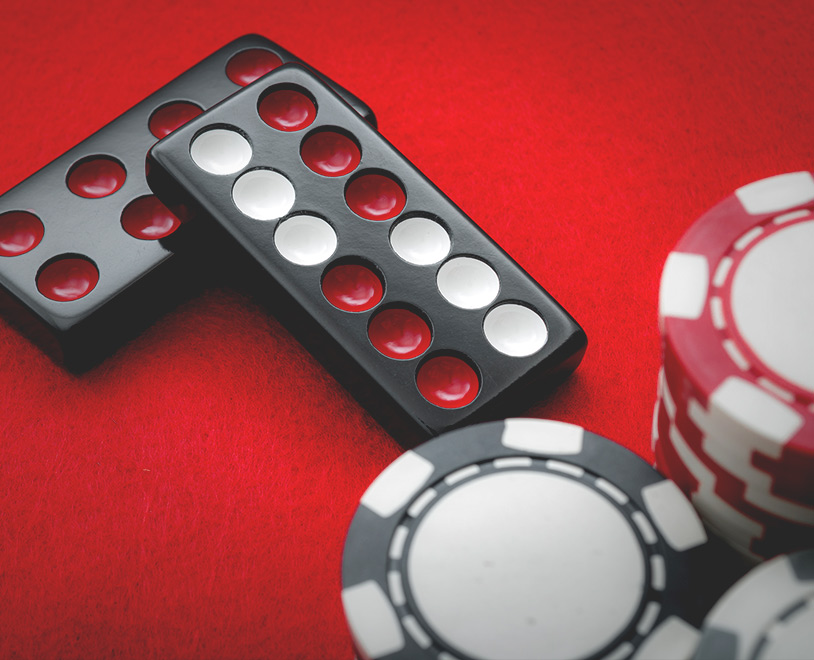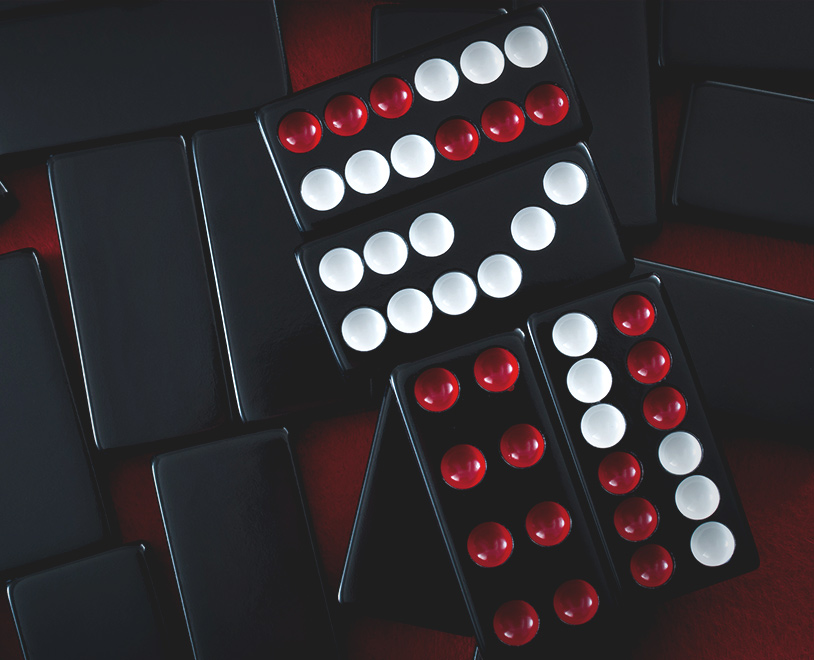Of all the poker-based table games at Bodog Casino, there’s one that stands out from the crowd: Pai Gow Poker. That’s because it’s actually based on two different games: poker, and the ancient Chinese dominoes game known as pai gow. Fortunately, you don’t need to know anything about dominoes to play Pai Gow Poker online at Bodog; all you need is a cursory understanding of poker, plus the specific rules for this special game – and those rules are quite easy to pick up.
But what if you want to play Pai Gow Poker at a high level? That will take a little more work. In this guide, we’ll show you the rules for online Pai Gow Poker, and we’ll also take a look at the strategies you can use to play the game as well as possible. Our journey begins some 30-odd years ago at a struggling card room in East Los Angeles, where the owner is about to make both the best and the worst decisions of his casino life.

Pai Gow Poker Overview
The year is 1985, and Sam Torosian has a problem. The California Bell Casino, which he bought just a year earlier, is a little thin on customers. Torosian decided a new game might help bring in some business. Lots of people were already playing pai gow; this is a lively game where the players take the dominoes they’re dealt and split them into two hands, then compare those hands to see who’s best. Torosian swapped out the dominoes for the standard 52-card deck, plus a Joker, made a few tweaks to the rules, and voilà, Pai Gow Poker was born.
That was Torosian’s good decision. The bad one, reportedly based on the advice of poker savant Mike Caro, was Torosian not patenting his new invention. Pai Gow poker was an instant success, but when it spread to other card rooms in California, as well as the Las Vegas casinos, Torosian didn’t make a dime off those games. It’s said he lost out on up to $100 million in royalties. And as it turned out, Pai Gow Poker wasn’t enough to keep the Bell club going – it shut down in 1988, re-opened again for a while, then closed for good in 1992.

How to Play Pai Gow Poker
When you play Pai Gow Poker, casino rules at bricks-and-mortar locations are a lot more involved than the online Pai Gow rules at Bodog. In the live version, players have the opportunity to act as the Banker, and bet on or against other players’ hands. There are also tons of different side bets to keep track of. No need for any of that when you play at Bodog; here, it’s just you versus the Dealer, with no other players at your virtual table.
The Rules
Every game of Pai Gow Poker at Bodog Casino starts when you place your bet, which can be anywhere between $1 and $500. Then you and the Dealer each receive seven cards, yours face-up and theirs face-down. Your task is to split those seven cards into two hands: one with five cards, known as the rear hand, and one with two cards, known as the front hand. The rear hand must be stronger than the front hand when you split your cards. After you’ve made your choice, the Dealer flips over their cards and does the same, then the hands are compared and the winner is declared.
When comparing hands in Pai Gow Poker, your 5-card rear hand is matched up against the Dealer’s rear hand, and your 2-card front hand takes on the Dealer’s front hand. If both your hands are better, you win the round, and you get paid even money, minus a 5% commission for the house. If both the Dealer’s hands are better, you lose. When each of you has one hand that’s better, it’s a push – all monies returned. Tied hands always go to the Dealer.
Pai Gow Poker hands are compared using the standard poker hand rankings, but don’t forget, there’s a Joker in the deck, so you can also make Five of a Kind, which beats a Royal Flush. There’s only one way to make Five of a Kind, though: It has to be five Aces. The Joker in Pai Gow Poker is a “semi-Wild” card that you can use to complete Straights and Flushes. Any other time, it’s considered an Ace.
There’s one more twist to the standard hand rankings when you play Pai Gow Poker. In this game, the wheel (Five-Four-Three-Deuce-Ace) is the second-best Straight possible, instead of the worst Straight as it is in regular poker. This is the way the game was originally played in California; if you play Pai Gow Poker elsewhere at a live casino, the wheel may or may not be second-best, but we’ve kept that rule in play here at Bodog Casino.
The Odds
As you can see, Pai Gow Poker is a very easy game to play: There’s only one decision to be made, and that’s by you, the Player. The Dealer doesn’t even get to choose how their cards are split up – they have to use the house way every time. It’s kind of like how Blackjack dealers always have to keep hitting until they have 17 (unless it’s soft 17, depending on the game) or go bust. This makes it easy to calculate the odds for each possible hand you can make, then build an optimal Pai Gow Poker strategy based on those odds.
Speaking of which, here are the odds for making every possible rank with your 5-card Pai Gow Poker hand:
Five of a Kind: 0.000732%
Straight or Royal Flush: 0.137%
Four of a Kind: 0.199%
Full House: 2.72%
Flush: 4.00%
Straight: 7.29%
Three of a Kind: 4.85%
Two Pair: 23.1%
One Pair: 41.7%
High Card: 16.1%
The odds for your 2-card Pai Gow Poker hand will depend on how you split your cards, but as a rough guide, you’ll get a Pair about 13.4% of the time. You can only make a Pair or High Card with your front hand; suitedness and connectedness don’t matter, so there are no mini-Flushes or mini-Straights.

Advanced Pai Gow Poker Strategy
Now comes the tricky part: Playing Pai Gow Poker optimally. It’s a lot like playing Video Poker online, where every game has a highly detailed strategy that can be used to make sure you play every single hand as well as possible. If you can remember all the steps, you can narrow the house edge all the way down to that 2.5% minimum. However, there are a lot of steps to remember, far too many to get into right now. You can find these optimal strategies online if you’re interested.
Playing a near-optimal Pai Gow Poker strategy, on the other hand, will get you almost all the way down to 2.5% without melting your brain. These strategies are highly recommended for beginners; if you can get the near-optimal version down pat, you can start tackling the more complicated optimal strategy – again, much like Video Poker, and Blackjack for that matter.
Near-optimal Pai Gow Poker strategies are also available online; as always, make sure you’re getting yours from a reputable source. A typical near-optimal strategy will ask you to look at your seven cards and classify them into one of roughly 20 different groups, ranked by strength and each with its own instructions for how to split your cards. If your cards fit into more than one category, you’ll choose the group closest to the top of the list.
Since a Pair is the most common 5-card rear hand you’ll make in Pai Gow Poker, let’s use that as an example. If your seven cards give you the option of putting a Straight or a Flush in your rear hand, and you have a Pair, one recommended strategy is to put that Pair in your 2-card front hand – unless you have QQ, JJ, TT or 99, in which case you should play Ace-King in your front hand if you’ve got it. When your seven cards don’t have Straight/Flush potential, put that Pair in your rear hand and play your two best kickers up front. Just like that, you now know how to play over 40% of your Pai Gow Poker hands close to optimally.
Want to figure out the other 60%? You can try these strategies out for free by playing Pai Gow Poker at Bodog Casino using the Practice Mode. Then, once you’re ready, switch over to Real Play and show the world what you’re made of. Don’t forget to manage your bankroll appropriately; always play for entertainment purposes only, and never play with money you can’t afford to lose. We look forward to watching you dominate the Pai Gow Poker felt right here at Bodog.

